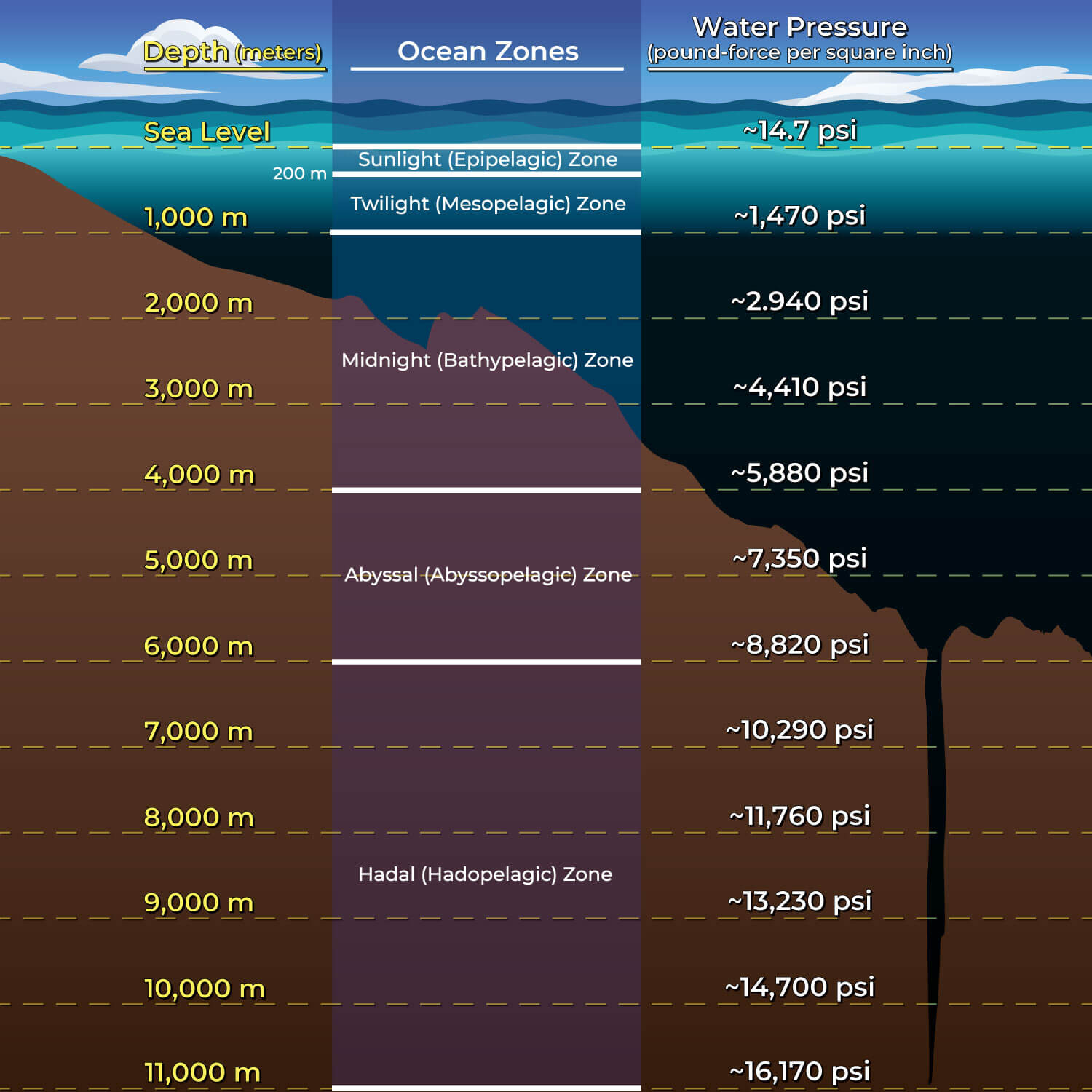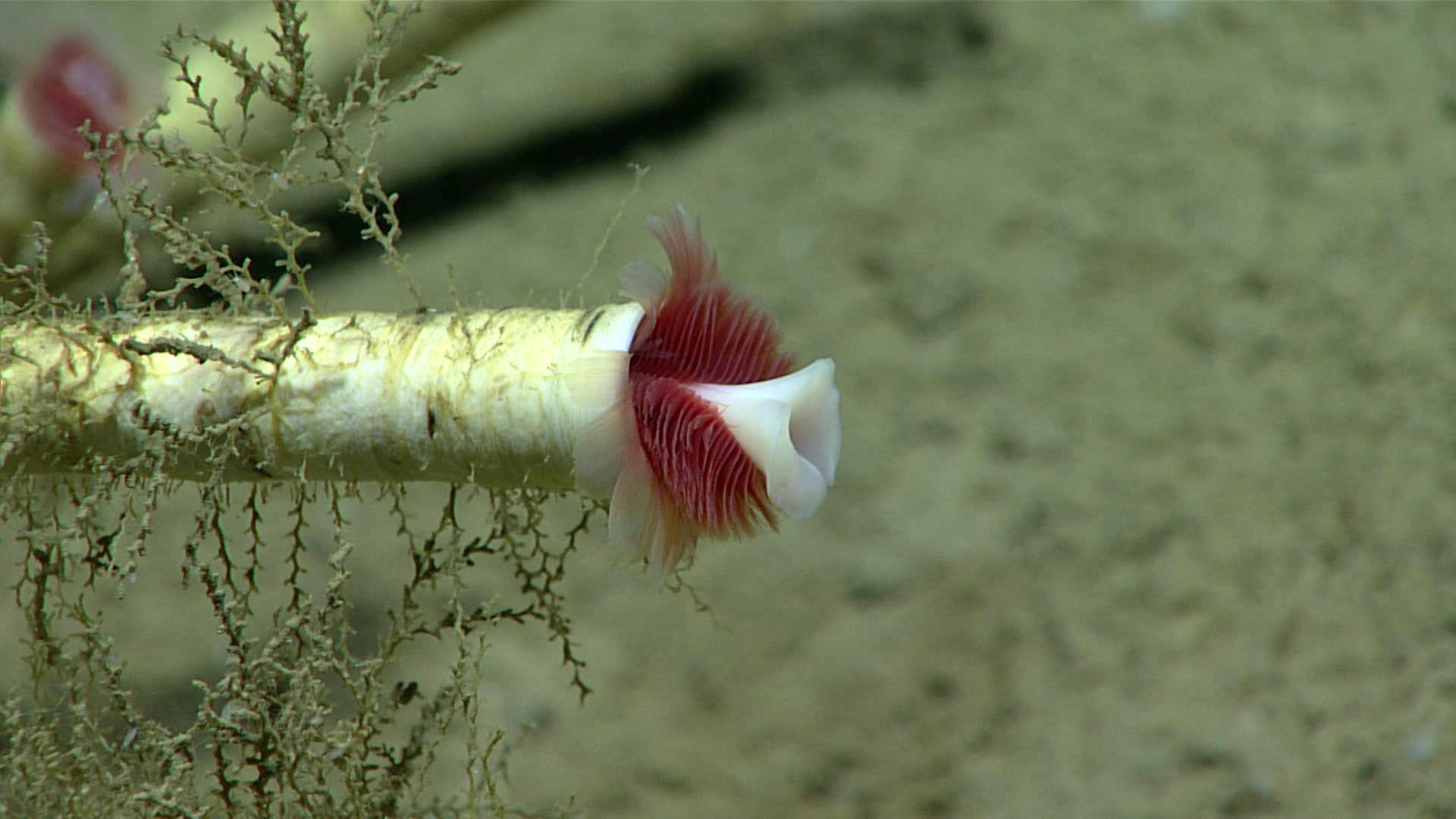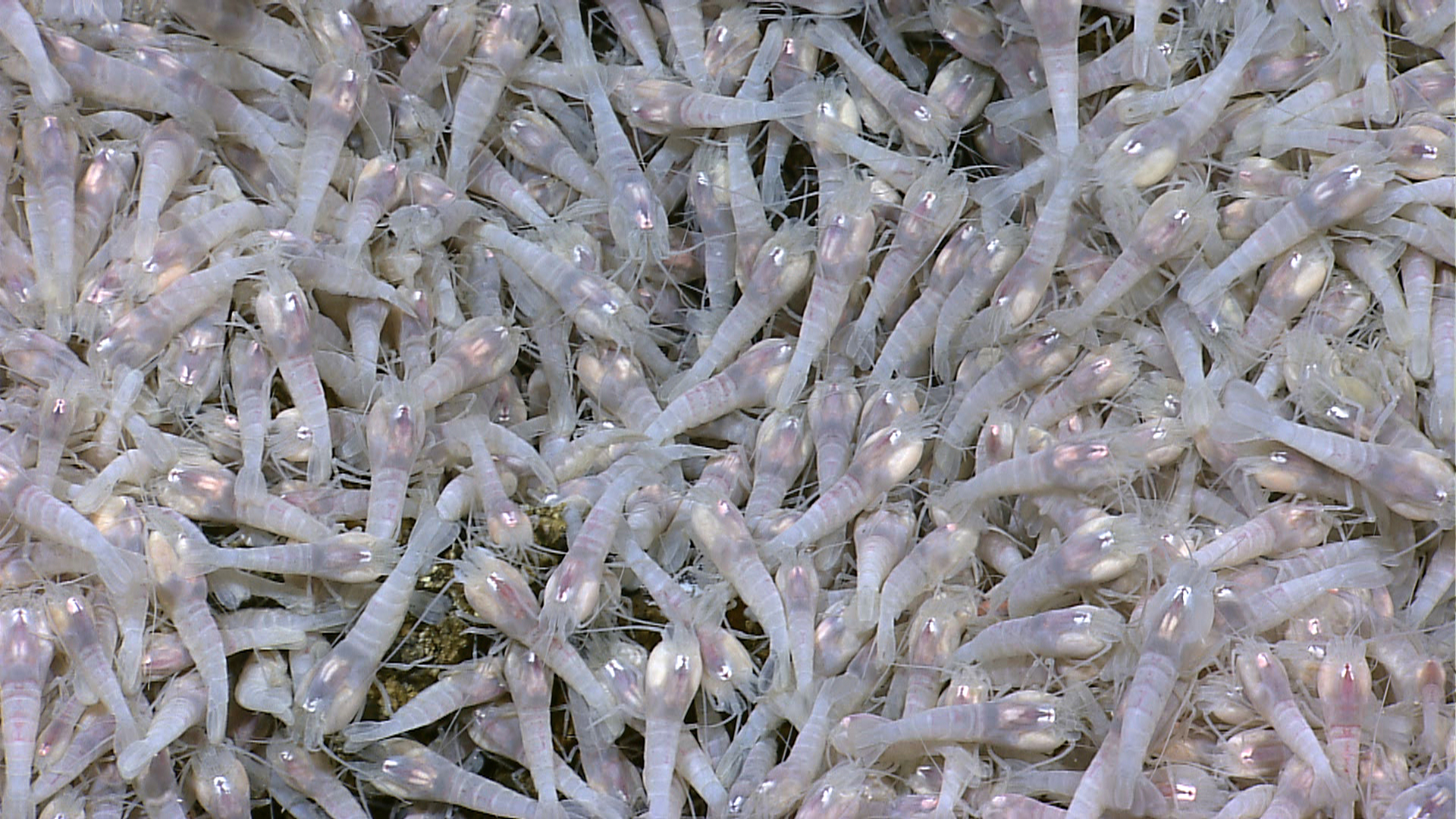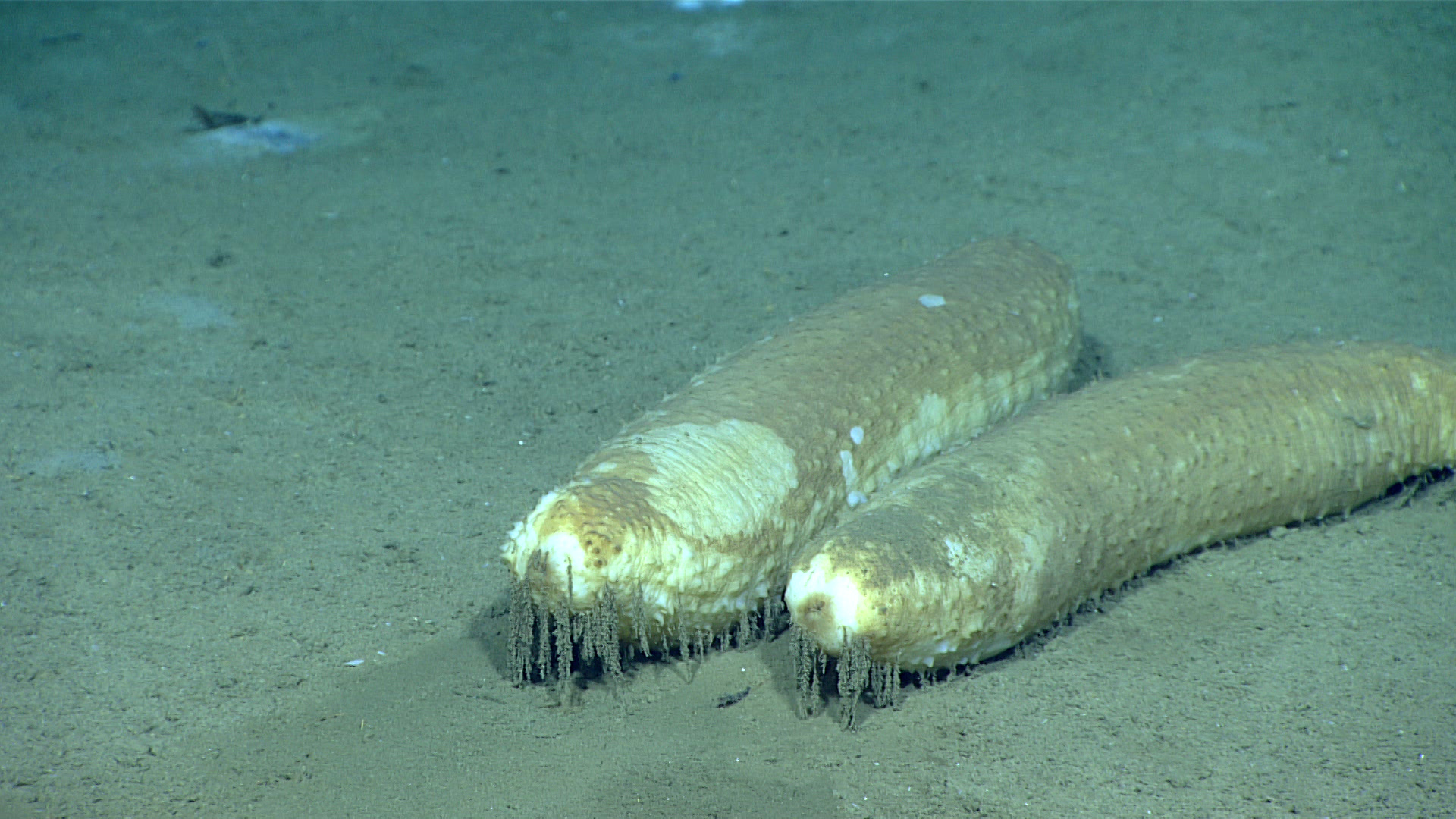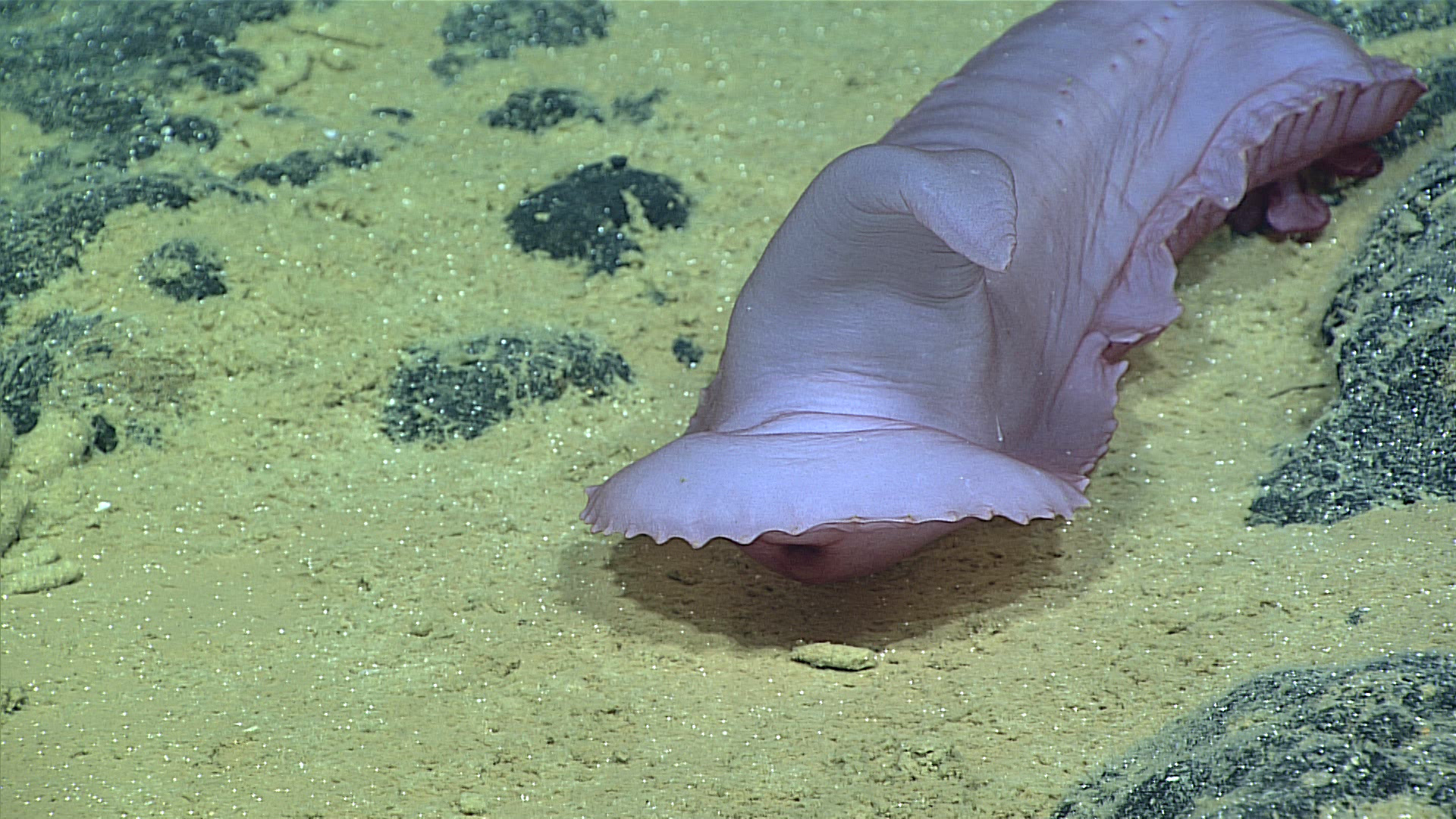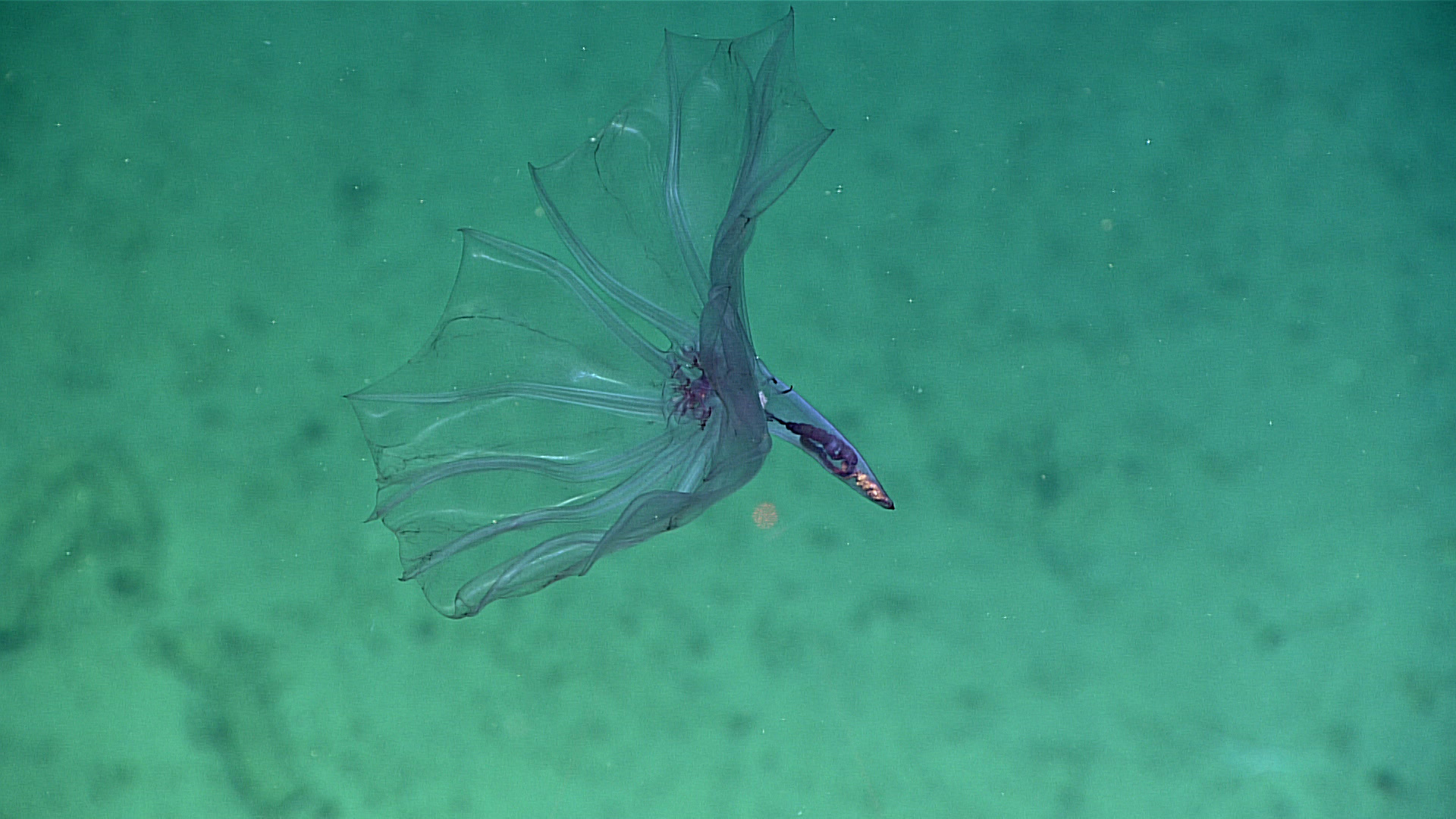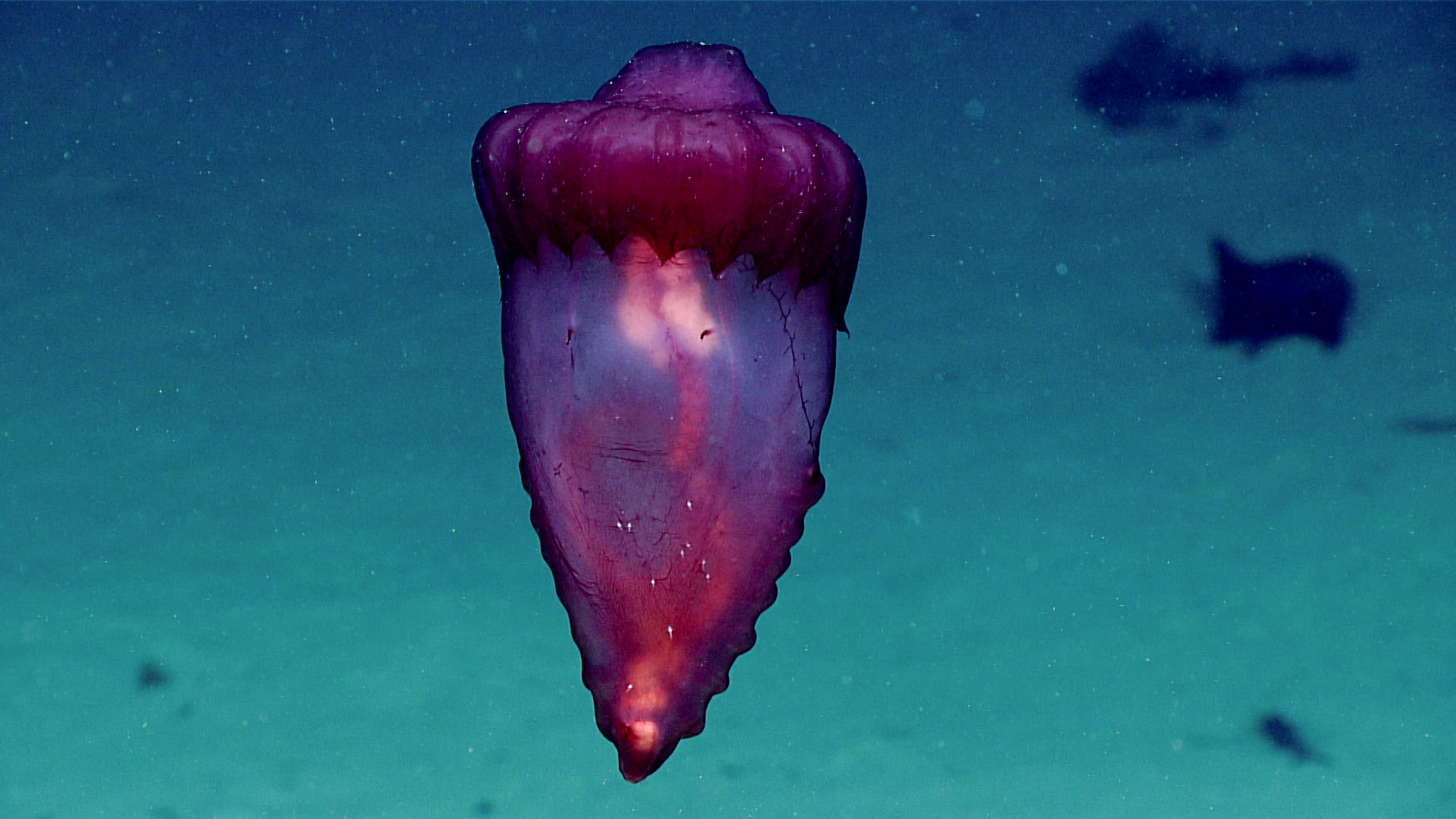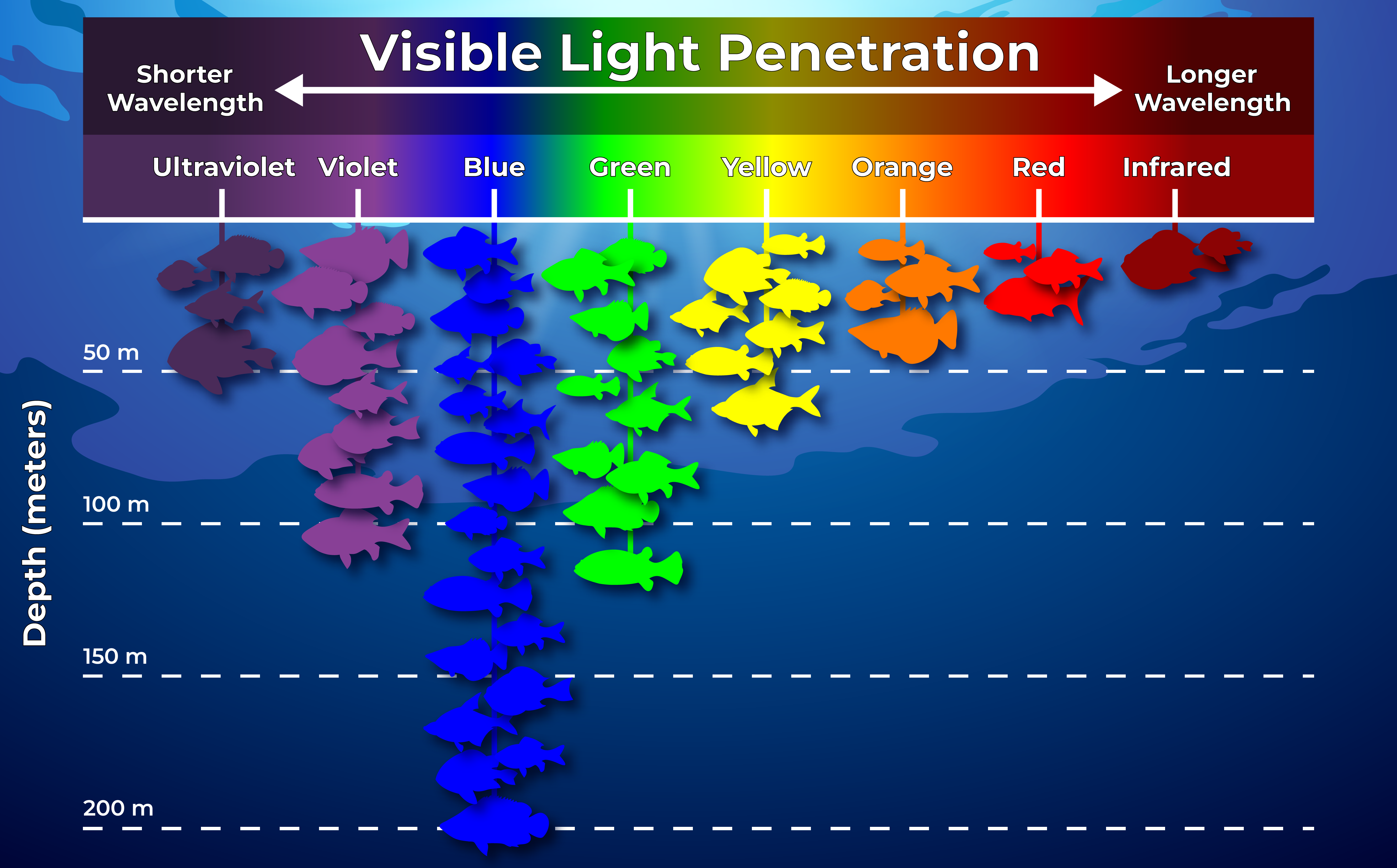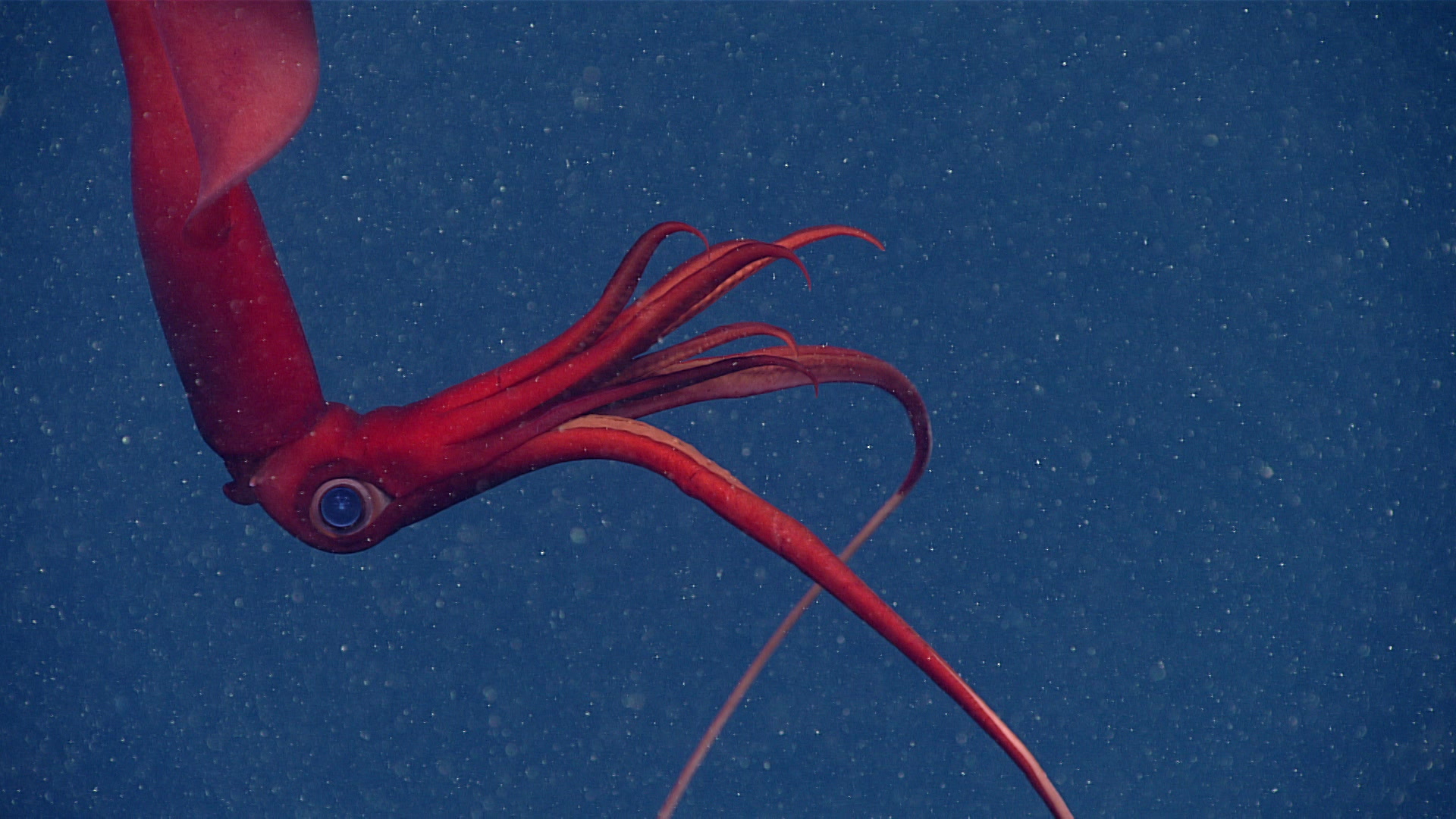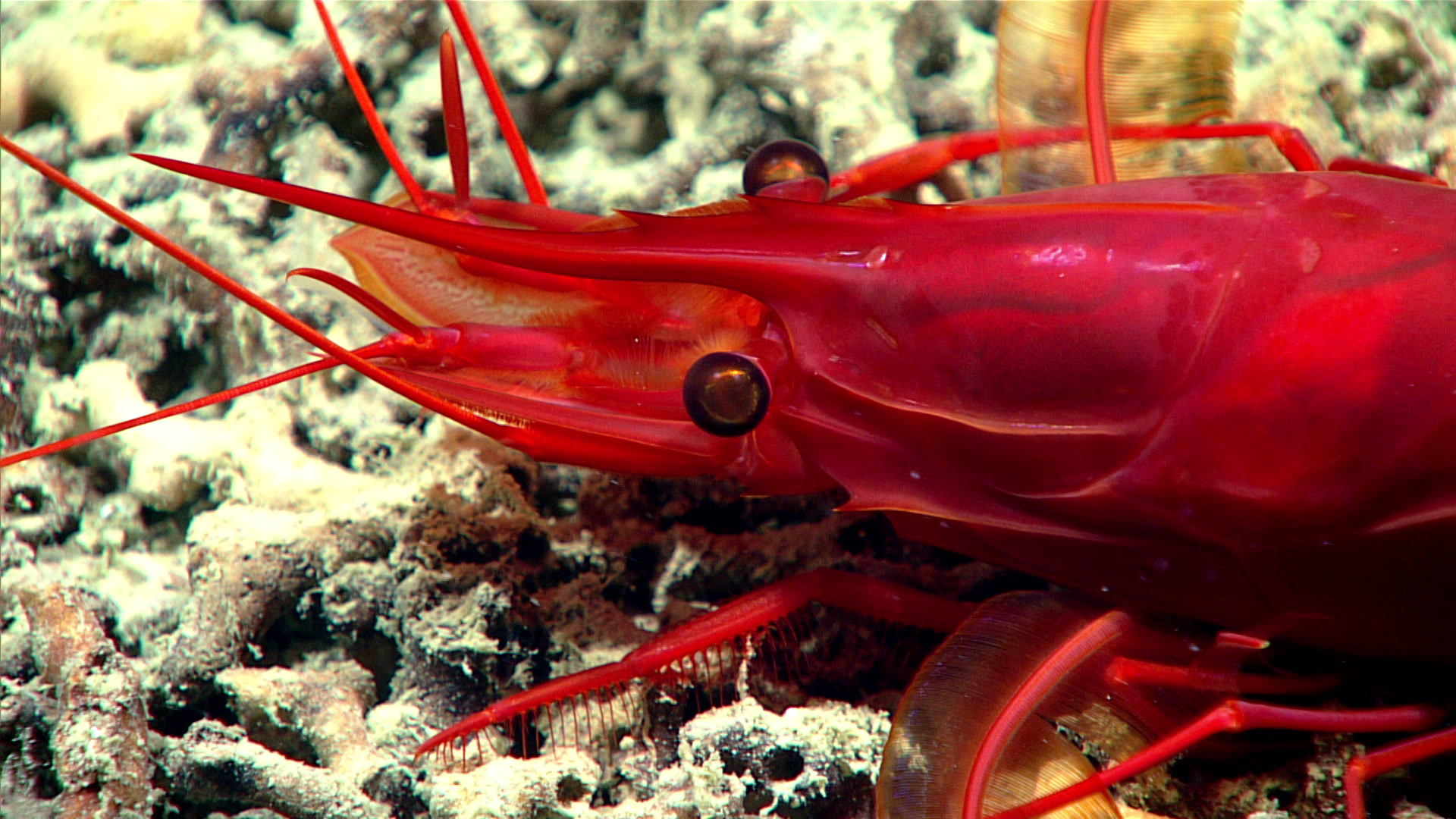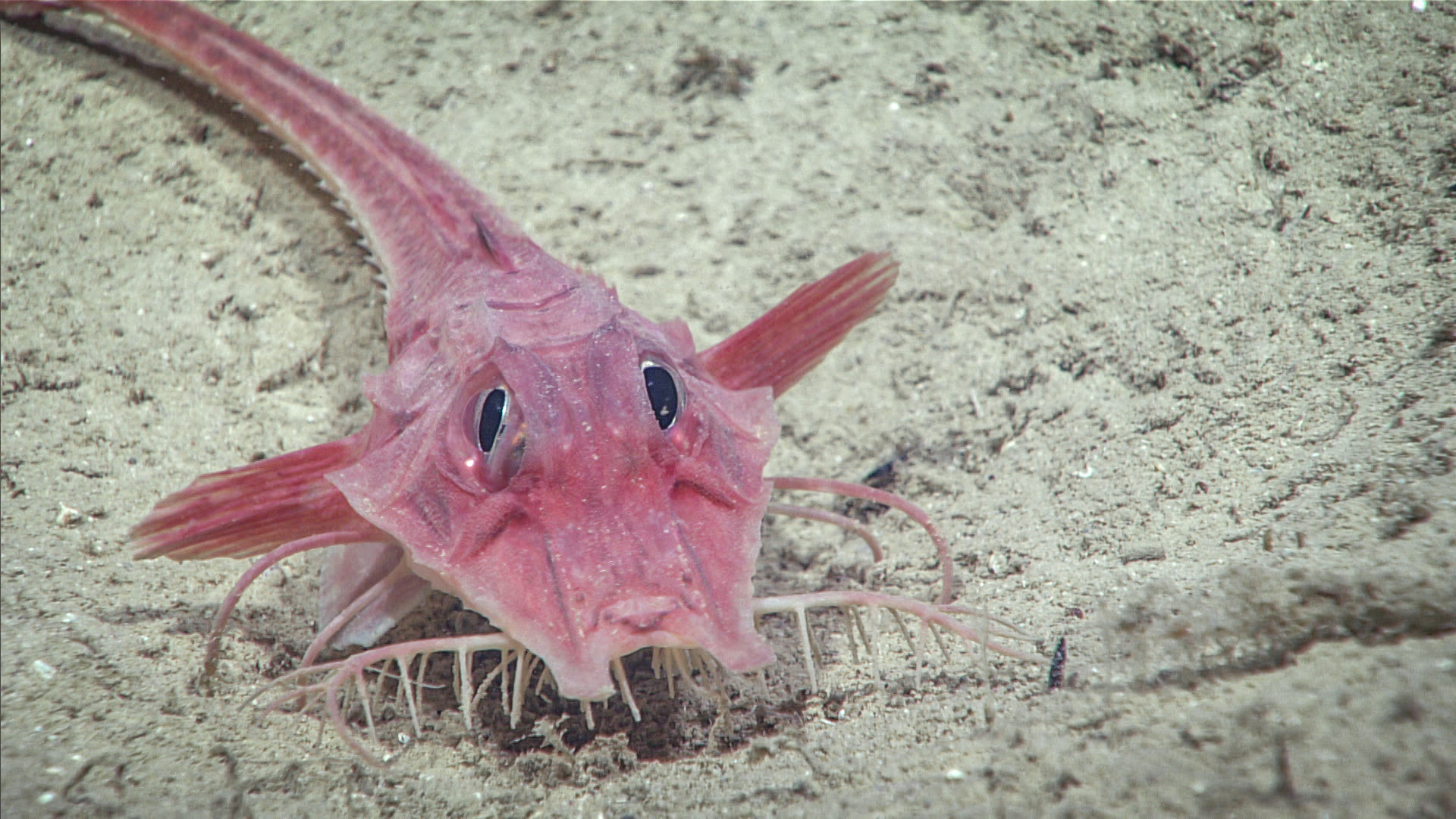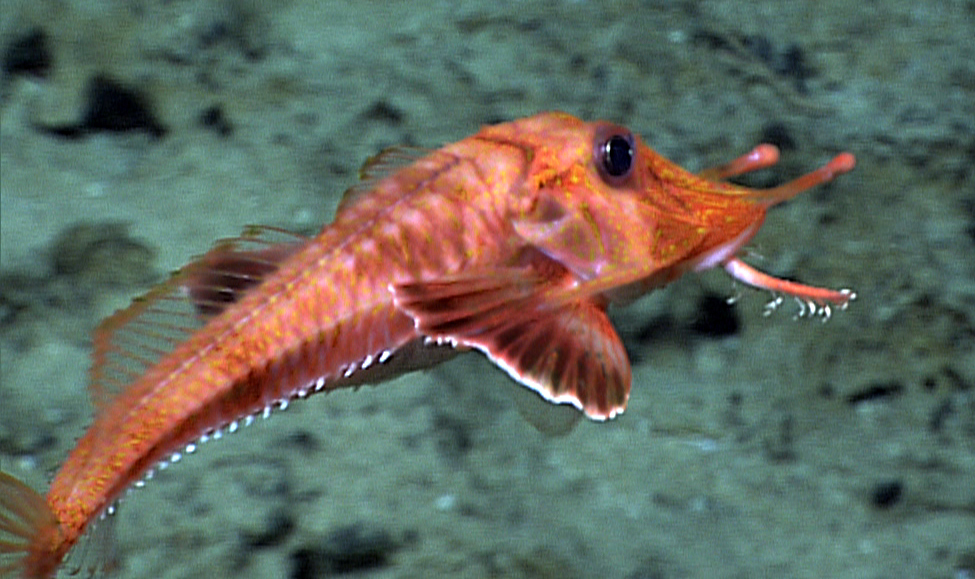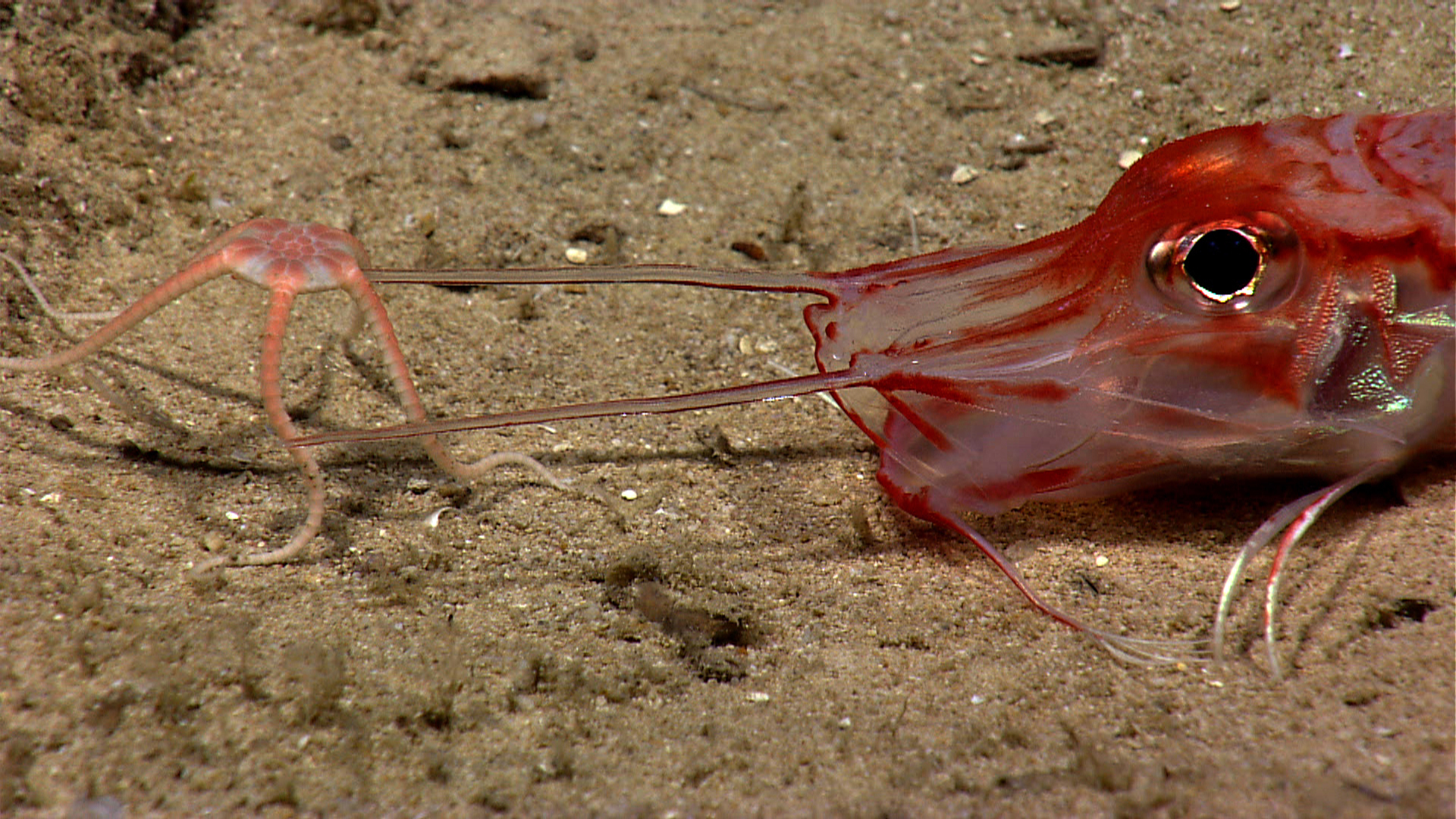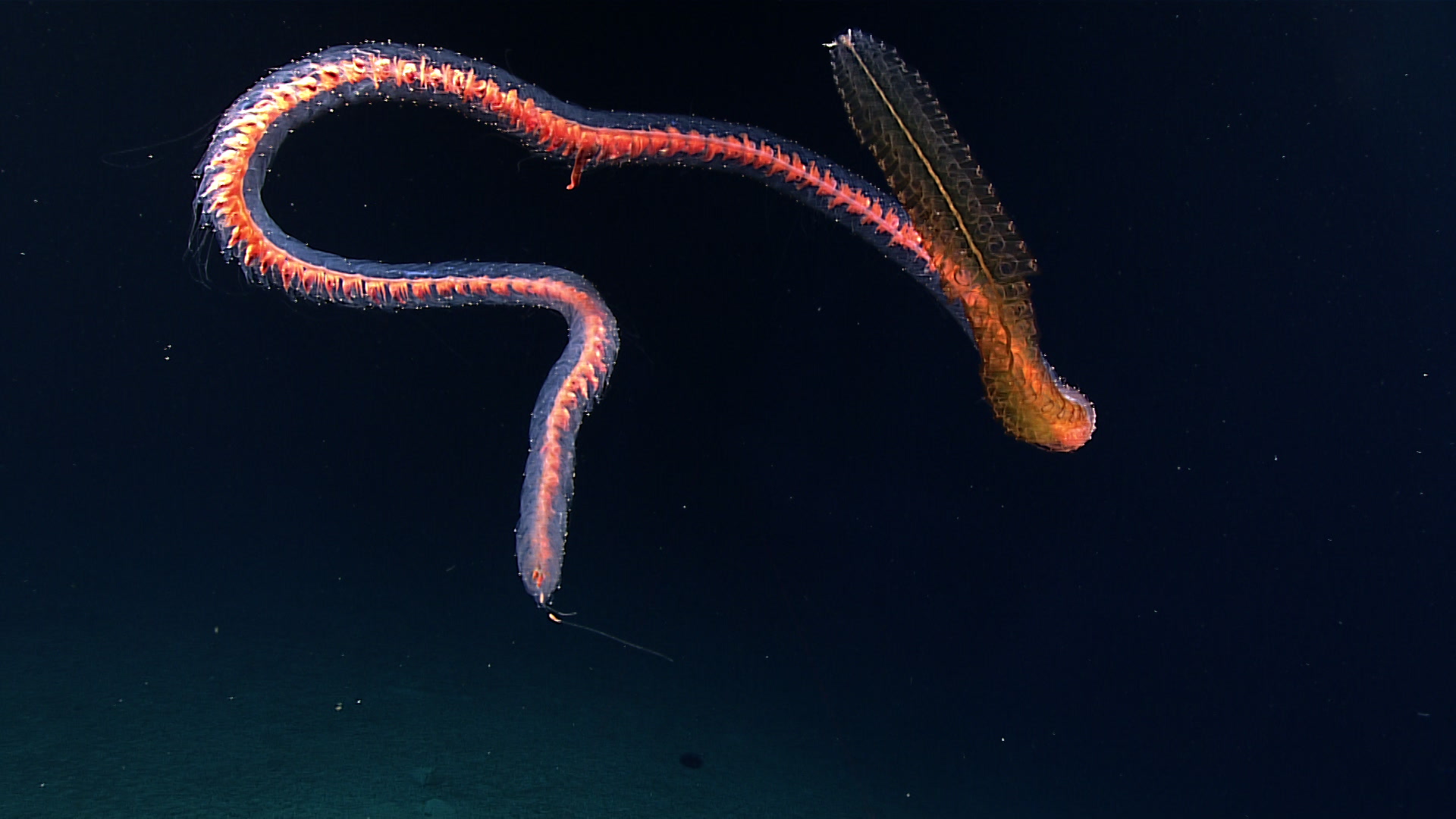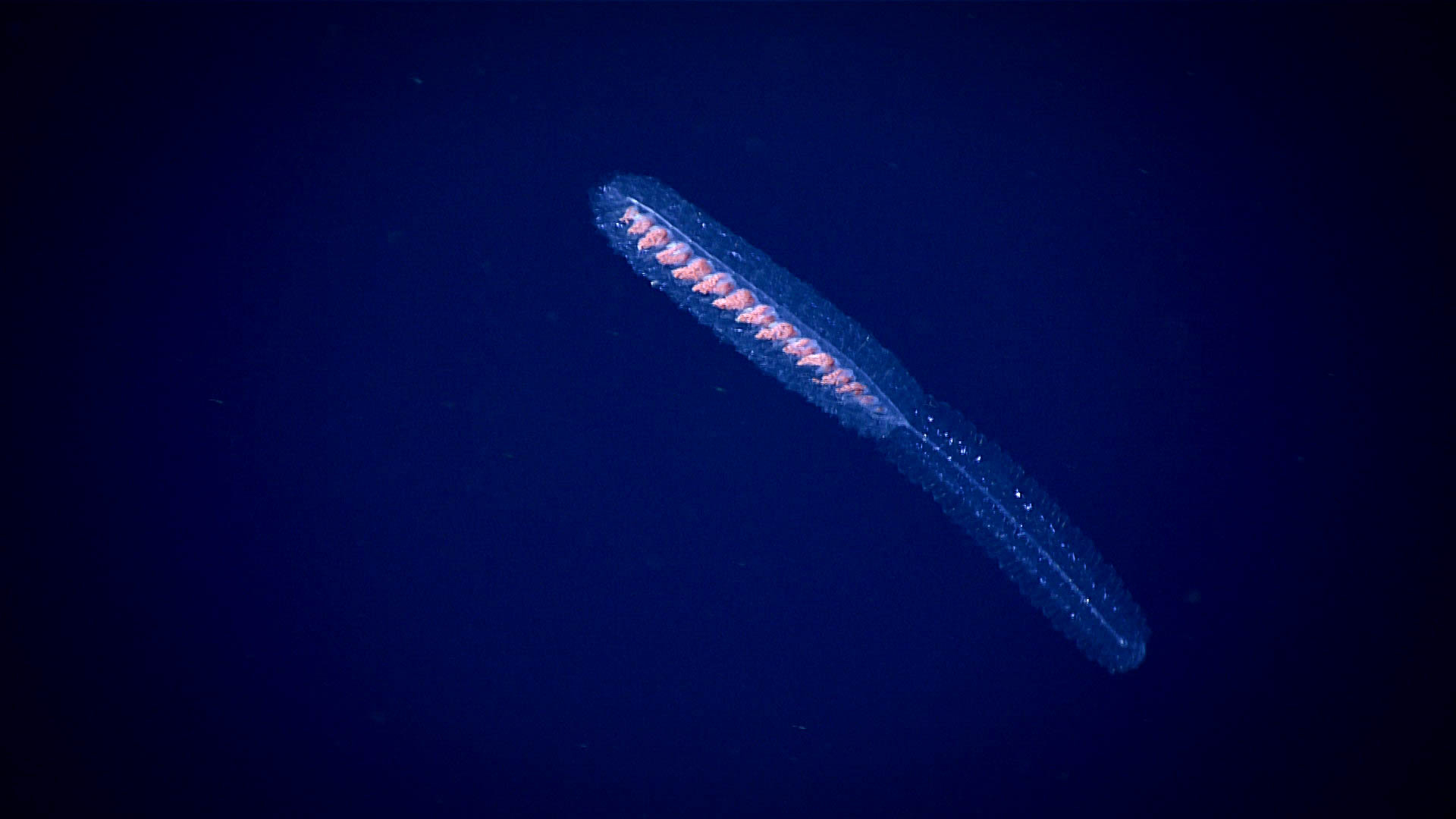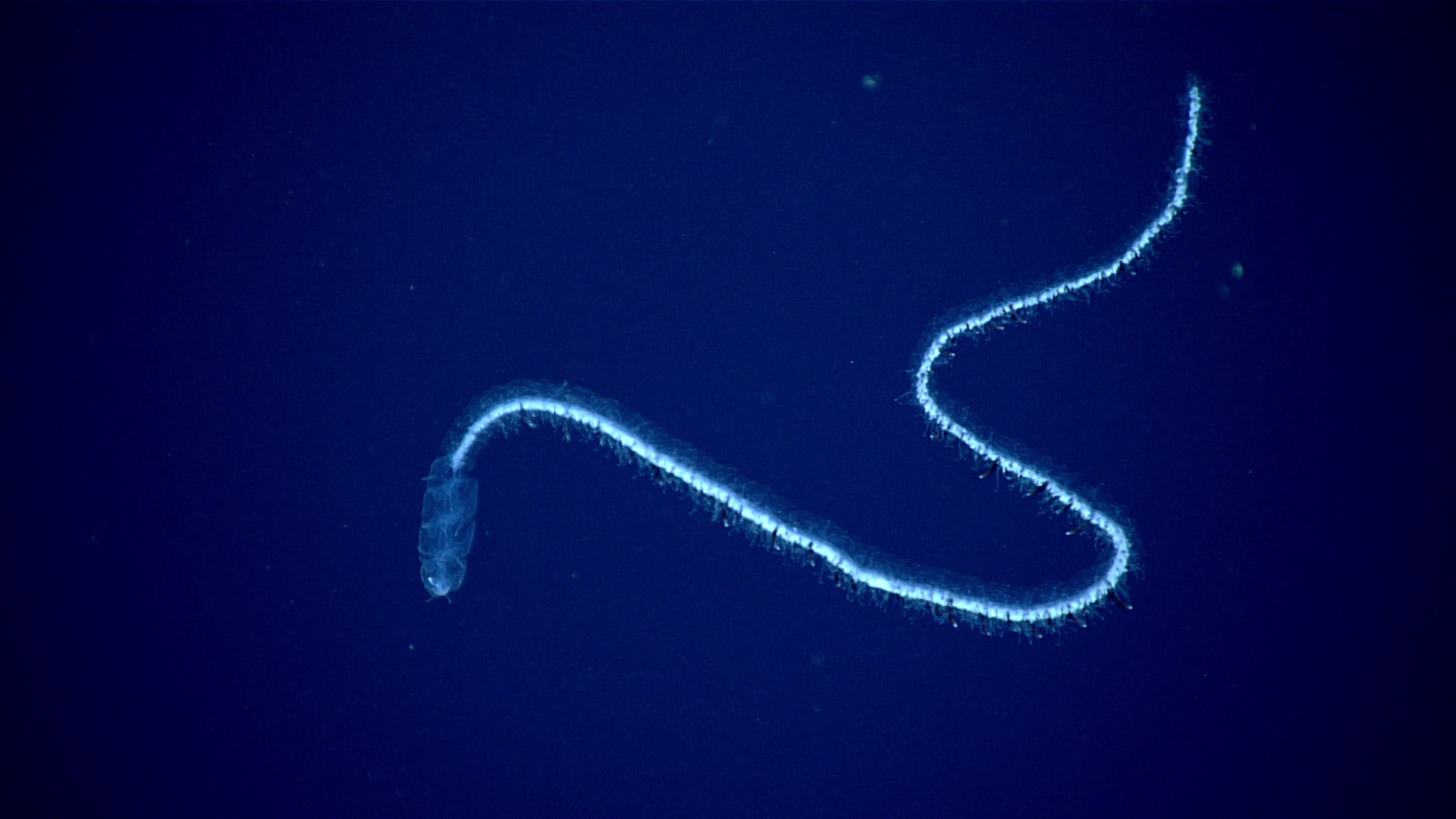As you travel from the surface of the ocean downward to the seafloor, the environment changes. Water pressure increases by one atmosphere (or 14 pounds of force per square inch) for every 10 meters (32.8 feet) of depth. At the deepest point in the ocean, located at over 11,000 meters (6.8 miles) depth at bottom of the Mariana Trench, the water pressure is a crushing eight tons per square inch, or about a thousand times the standard atmospheric pressure at sea level. That’s a lot of pressure!
In the deep ocean, at depths below 200 meters (656 feet), sunlight is absent and the only light comes from the organisms themselves. In a world of near complete darkness, deep-sea animals cannot rely on vision for things such as feeding, avoiding being eaten, or mating. Also, without sunlight, photosynthesis — the process by which plants make food — is not possible. This contributes to a general scarcity of food in the deep ocean and thus a lower overall density of animals. The lack of light at depth also means that it is very cold: below about 200 meters (656 feet) depth, ocean waters have an average temperature of only 4°C (39°F).
While these conditions are far too hostile for humans, consider that the deep ocean is an enormous living space, larger than any other habitable part of our planet. So perhaps what seems “extreme” to us is really “the norm” for the rest of our planet, and it shouldn’t come as a surprise that animals in the deep ocean have not only found ways to survive, but also to thrive.
Let's meet some of the wild and bizarre marine life of the deep ocean.
LIGHT AND PRESSURE IN THE OCEAN
Pressure in the ocean increases with depth. On the flip side, light decreases with depth as you travel through the zones of the ocean, with sunlight rarely penetrating beyond 200 meters (656 feet), an area known as the sunlight, or euphotic, zone. By the time you reach the deepest part of the ocean, an area called the hadal or hadopelagic zone, the only light available is generated by organisms themselves.
